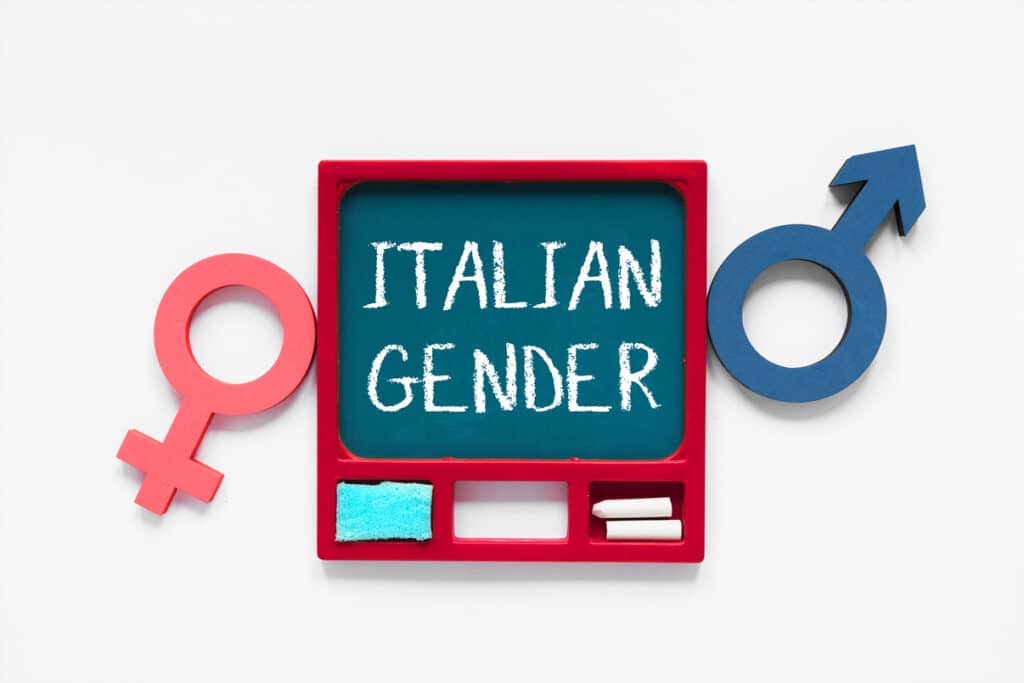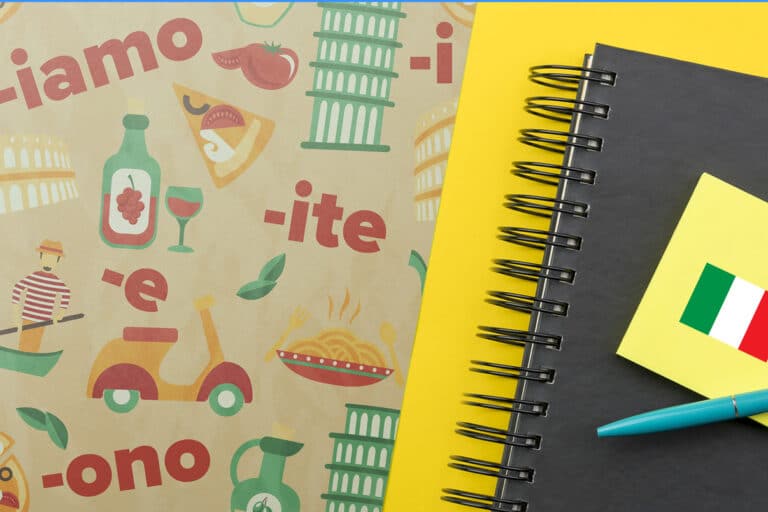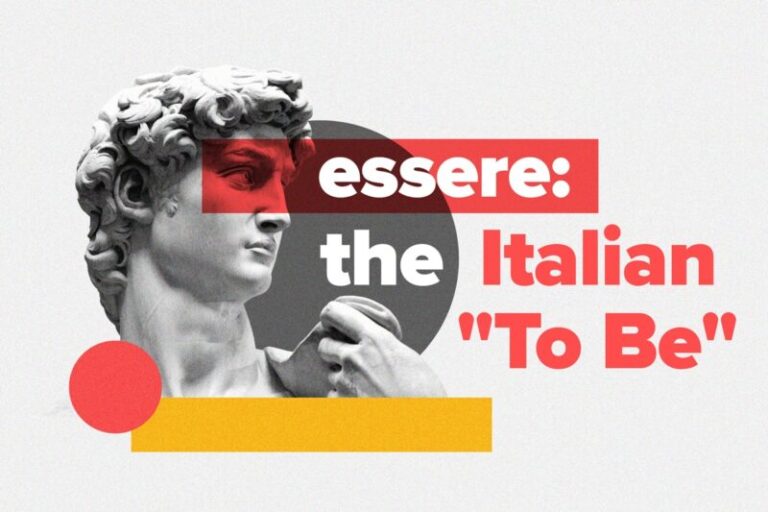Italian Gender Explained: Rules, Agreement and More

In Italian Grammar, words can be masculine or feminine, but the reason why is not always clear to those learning Italian as a second language.
In this guide, I’ll help to clear up the confusion and explain Italian gender and agreement.
Download: This blog post is available as a convenient and portable PDF that you can take anywhere. Click here to get a copy. (Download)
What Are Italian Genders?
Every Italian noun is one of two genders: maschile (masculine) or femminile (feminine).
Every noun has a gender, and gender is essential for agreement (which we’ll look at later in the post). If you look in an Italian dictionary, often the first thing you will see is an m or f after the word that denotes whether it is masculine or feminine.
Also, some nouns for animals will change gender based on the gender of the animal being described. This also goes for nouns referring to humans by their professions or nationalities.
Speaking from experience, gender and agreement is something that seems extremely basic on the surface, but actually ends up being the trickiest thing for Italian learner to master.
How to Tell if an Italian Noun Is Masculine or Feminine
The most basic way of identifying a word’s gender is to look at the final vowel. If it is an o, the noun is usually masculine and if the word ends in -a, it’s usually feminine.
But there is no one foolproof rule for what makes a word masculine or feminine in Italian—it’s just something speakers learn to recognize over time.
Luckily, there are many signs that can help you identify a word’s gender when you come across it.
Let’s take a look:
Which Italian nouns are masculine?
Here are some ways to spot a masculine noun:
- It ends in —o
- It ends in —ore, like professore (professor)
- It’s a profession ending in -ta, like pilota (pilot)
- It’s from a foreign language and ends in a consonant, like bar or sport
- It’s the name of a month
- It’s a day of the week that isn’t domenica (Sunday)
- It’s a number that does not refer to time, like otto (eight)
- It’s the name of a tree, like pero (pear tree) or olmo (elm)
- It has Greek roots, like problema (problem)
Which Italian nouns are feminine?
Nouns are usually feminine when they end in -a, but that’s not the only way to identify them. Here are a few other signs a word is feminine:
- It ends in -a
- It ends in -trice, like scrittrice (female writer)
- It ends in -ione, like stagione (season)
- It ends in tà or -tù like città (city) or gioventù (youth)
- It’s a singular noun ending in -i, like crisi (crisis)
- It’s a profession ending in -essa, like professoressa (female professor)
- It’s a time on the clock, like le otto e mezzo (eight-thirty)
- It’s a fruit, like pera (pear) or mela (apple)
- It’s a type of science, like chimica (chemistry) or fisica (physics)
- It’s an abstract concept, like giustizia (justice)
Exceptions to Italian noun gender rules
Just when you think you’ve got it all figured out, there are always exceptions to the rule. Here are just a few words that seem like they should be one gender, but are actually the other:
- l’auto (f) — the car
- la moto (f) — the motorbike
- la foto (f) — the photo
- la radio (f) — the radio
- il cinema (m) — the cinema
- la mano (f) v the hand
In some cases, this is because the word is actually a shortened form of another word that has become the most-used version. L’auto, for example, is short for l’automobile (the automobile), and la foto is short for la fotografia (the photograph). In other cases, like with la mano, it is a holdover from Latin.
Words where you could use either gender
In addition to those exceptions, there are also some words that can be masculine or feminine depending on the gender of the person or animal you’re talking about. In this case, you change which article you use. For example:
- nouns ending in -ista like la turista or il turista (the female tourist or the male tourist)
- some nouns ending in -ga like il collega or la collega (the male colleague or the female colleague)
And sometimes you can change the gender by changing both the article and the last letter. For instance, some animal names like un gatto (a cat) are masculine in general, but have a feminine version to describe a female animal, like la gatta.
Singular vs. Plural: How Italian Nouns Change Based on Number
Now that we’ve seen how to tell what gender a word is, we can get to the second most important part of this lesson: agreement.
Everything in Italian is based on agreement, and plurals are no exception. In English, we usually add an -s or -es to make a word plural. But in Italian, both the article and the final vowel of the word change when a word becomes plural.
Italian articles for plural nouns
- il becomes i
- lo becomes gli
- la becomes le
Final vowel changes for plural Italian nouns
- o becomes i
- a becomes e
- e becomes i
- words ending in consonants or à stay the same
So, to put it all together:
il gatto becomes i gatti (or la gatta becomes le gatte)
lo zio (the uncle) becomes gli zii
and l’università (the university) changes the article only and becomes le università
Exceptions to Italian plural noun rules
That seems simple enough, but there are a few more exceptions you have to keep an eye out for. In another throwback to Latin, some words don’t just change their article and last letter when they become plural—they change gender.
- l’uovo (the egg) — le uova (the eggs)
- il dito (the finger) — le dita (the fingers)
- il braccio (the arm) — le braccia (the arms)
- l’osso (the bone) — le ossa (the bones)
- il muro (the wall) — le mura (the walls)
- il lenzuolo (the sheet) — le lenzuola (the sheets)
How to Make Your Italian Nouns, Articles, and Adjectives Agree
Now that you know all about masculine and feminine and singular and plural nouns, it’s time to show you how to make them work in a sentence.
In Italian grammar, every part of a sentence must agree with the other parts. This is the number one rule of the language.
This means that the article, adjective, adverb and noun must all agree in both number and gender or the sentence will be (while not usually completely unintelligible) completely wrong.
You can’t use bello, a masculine adjective, to describe una casa, which is feminine, for example. If you are using a feminine noun, you must then make any article or adjectives that go with it feminine as well.
Basically, you start with the noun and then spread the gender outward. It goes something like this:
Che bella casa! — What a beautiful house!
Dammi lo zaino azzurro. — Give me the blue backpack.
Le ragazze sono carine — The girls are nice.
Alcune università sono molto vecchie. — Some universities are very old.
And that’s it! Now you are an expert on Italian grammatical gender.
Now, aside from a few pesky exceptions to the rules (which every language has, unfortunately), can we all agree that Italian gender and agreement aren’t so tough?
If you want to see you gender works in context, you could check out a language learning program such as FluentU.
FluentU takes authentic videos—like music videos, movie trailers, news and inspiring talks—and turns them into personalized language learning lessons.
You can try FluentU for free for 2 weeks. Check out the website or download the iOS app or Android app.
P.S. Click here to take advantage of our current sale! (Expires at the end of this month.)
You can also try out the quiz below to test what you’ve learned.
Italian Gender Quiz
Choose the correct translation of the following words.
1. the radio
a. il radio
b. la radio
c. le radio
2. the strawberry
a. il fragola
b. la fragolo
c. la fragola
3. the books
a. i libri
b. gli libri
c. le libri
Which of the following sentences are correct?
4. The famous female author wrote three books.
a. L’autore famoso ha scritto tre libri.
b. L’autrice famosa ha scritto tre libri.
c. Il autrice famoso ha scritto tre libri.
5. The pine tree is gigantic.
a. Il pino è gigantesco.
b. La pina è gigantesca.
c. Il pino è gigantesca.
Answers: 1. b 2. c 3. a 4. b 5. a








